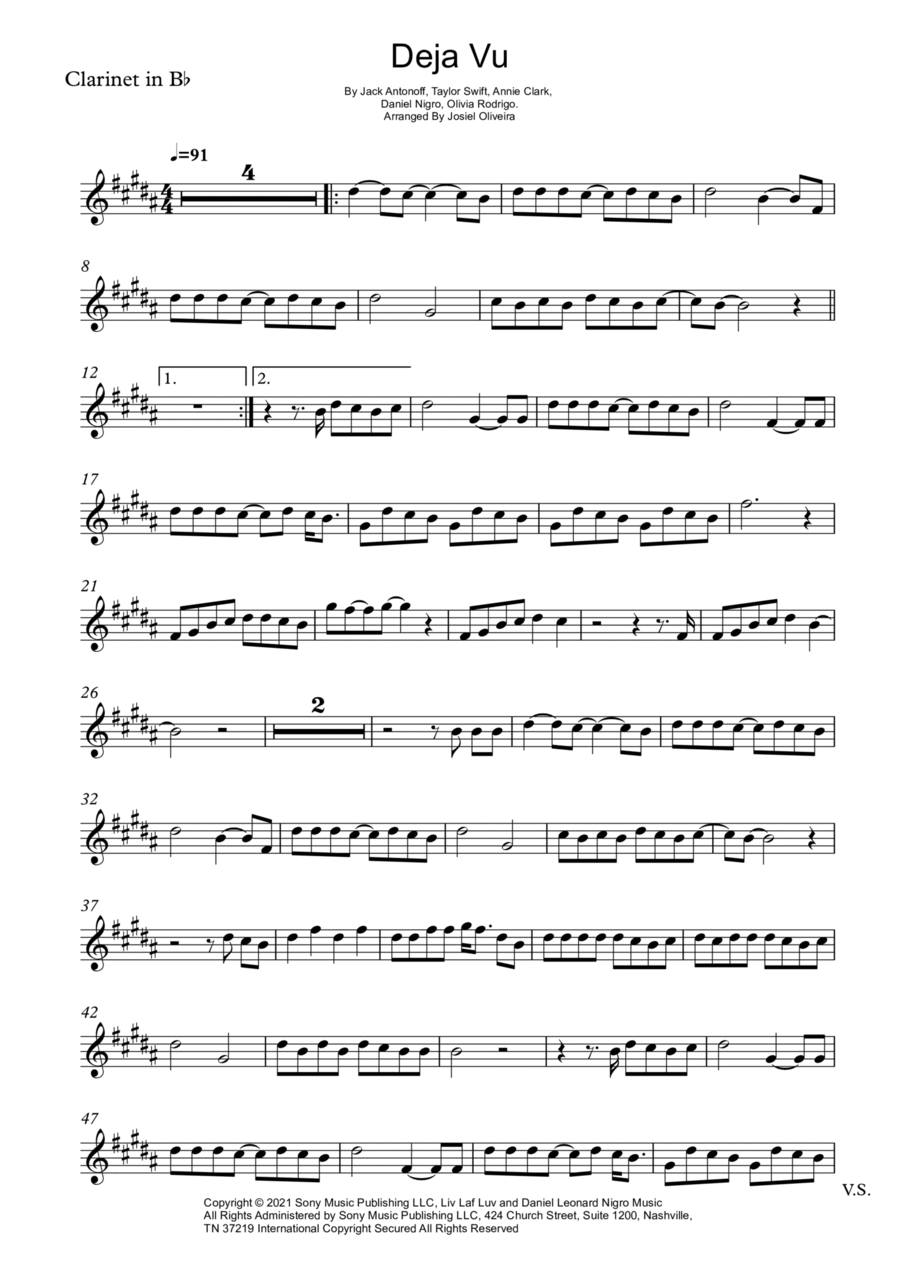B-Flat Clarinet Solo - Level 1 - Digital Download SKU: A0.643948 By Olivia Rodrigo. By Annie Clark, Daniel Nigro, Jack Antonoff, Olivia Rodrigo, and Taylor Swift. Arranged by Josiel Oliveira. Multicultural,Pop,Romantic Period,World. Individual part. 2 pages. M das Melodias #253025. Published by M das Melodias (A0.643948). Music sheet music Deja Vu for Clarinet in Bb. Easy level. Very famous music. More played. Excellent romantic music. Beautiful romantic music. Singer Olivia Rodrigo. Relaxing music to dream. Car rides to Malibu Strawberry ice cream One spoon for two And trading jackets Laughing 'bout how small it looks on you (Ha-ha-ha-ha, ha-ha-ha-ha, ha-ha-ha-ha) Watching reruns of Glee Being annoying Singing in harmony I bet she's bragging To all her friends, saying you're so unique, hmm So when you gonna tell her That we did that, too? She thinks it's special But it's all reused That was our place, I found it first I made the jokes you tell to her when she's with you Do you get déjà vu when she's with you? Do you get déjà vu? (Ah), hmm Do you get déjà vu, huh? Do you call her Almost say my name? 'Cause let's be honest We kinda do sound the same Another actress I hate to think that I was just your type I'll bet that she knows Billy Joel 'Cause you played her Uptown Girl You're singing it together Now I bet you even tell her How you love her In between the chorus and the verse (ooh) (I love you) So when you gonna tell her That we did that, too? She thinks it's special But it's all reused That was the show we talked about Played you the song she's singing now when she's with you Do you get déjà vu when she's with you? Do you get déjà vu? Oh Do you get déjà vu? Strawberry ice cream in Malibu Don't act like we didn't do that shit, too You're trading jackets like we used to do (Yeah, everything is all reused) Play her piano, but she doesn't know (oh, oh) That I was the one who taught you Billy Joel (oh) A different girl now, but there's nothing new (I know you get déjà vu).
